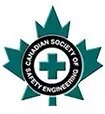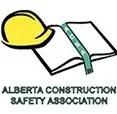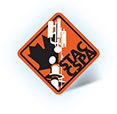Posted: Apr 30 '18

Nearly one-third of fatalities in the construction sector result from falls from elevated areas. Falls from rooftops account for most of these fatalities. Workers working on rooftops require fall protection in the form of personal arrest systems, and most importantly guardrail systems for fall protection.
This guide summarizes the types of guardrail systems for fall protection available to workers and standard practices required in guardrail installation and maintenance.
There are three main types of guardrail systems for fall protection on rooftops - non-penetrating, fixed-base, and portable.
Non-penetrating guardrailsAs the name suggests, non-penetrating guardrails are temporary systems installed without “penetrating” or making holes into the surface being worked on. Instead of fasteners, weights hold the system in place. This makes non-penetrating guardrails your best option if you plan to move the guardrail system on a regular basis.
Portable construction guardrailsPortable guardrail systems for fall protection also don’t penetrate the mounting surface. However, unlike non-penetrating guardrails, they come in both temporary and permanent configurations. One of their key advantages is that the anchors easily clamp to braces for quick installation and are designed for use with standard 2 x 4 wood posts. Portable guardrails are mostly used on flat, parapet, or overhanging roofs.
Fixed (or fixed-base) guardrailsFinally, fixed guardrails are, as the name suggests, permanent systems put in place to last the entire period of the project. They are excellent for frequently accessed or hazardous work areas and are therefore a good selection when working on commercial rooftops and manufacturing facilities.
To further increase worker safety, there are standard practices guiding how guardrail systems for fall protection are installed and maintained. The following are some of the most important practices to keep in mind;
Looking forward to a roofing project? Contact us today, to select from the best guardrail systems for fall protection.
REQUEST INFO ON OUR COURSES





